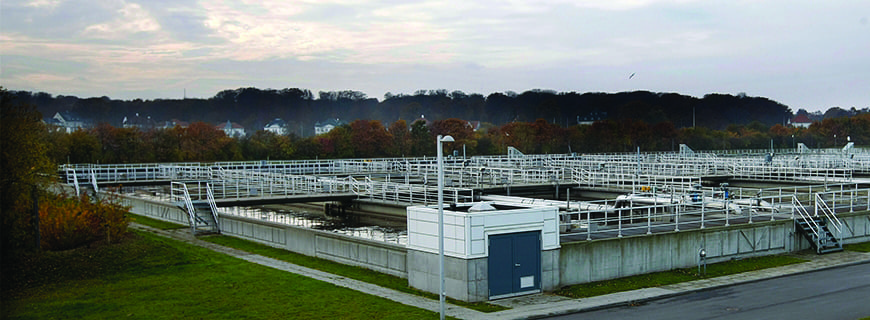District Power and Heating from a Wastewater Plant
A wastewater treatment plant in the Danish city of Aarhus is reportedly producing enough power to cover all of the energy used for the whole water cycle in its catchment area—from water production and water distribution to wastewater pumping and treatment—as well as 40% excess electricity and 2.5 GW of heat, without adding external organic waste or carbon emissions.
Upgrades that have been ongoing at the Marselisborg Wastewater Treatment Plant (Figure 3) since 2010 have enabled the facility to supply the district heating system in Denmark’s second-largest municipality. The achievement is notable because water and wastewater treatment facilities are typically the single largest electricity consumer for a municipality, accounting for between 25% and 40% of the average municipality’s electricity consumption in Denmark, owing to energy-intensive processes that are continually operating.
Plant owner Aarhus Water, a company that supplies and treats the municipality’s water, said that it worked with environmental consultants to improve the plant’s energy balance. Among the strategies it eventually implemented were: optimizing the nitrogen-removal process using online sensor control; implementing an advanced supervisory control and data acquisition control system; upgrading the blower technology to a high-speed turbo blower; installing frequency converters (from engineering group Danfoss) on more than 100 motors in almost all rotating equipment (including blowers, pumps, mixers, and dewatering pumps) to allow the plant to adapt to load variations; implementing a sludge liquor treatment based on the anammox process; and optimizing the fine bubble aeration system. “This has resulted in a reduction in power consumption of approximately 1 GWh/year which corresponds to about 25 percent in total savings,” the company said in December.

Over the same time, it also installed new biogas engines in its combined heat and power plant, which ramped up power production by about 1 GWh/year. A new heat exchanger enabled it to increase heat by 2 GWh/year, allowing it to sell surplus heat to the district heating grid.
—Sonal Patel, associate editor (@POWERmagazine, @sonalcpatel)